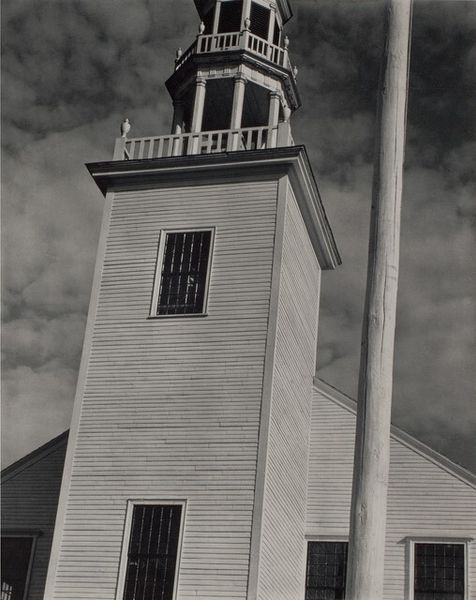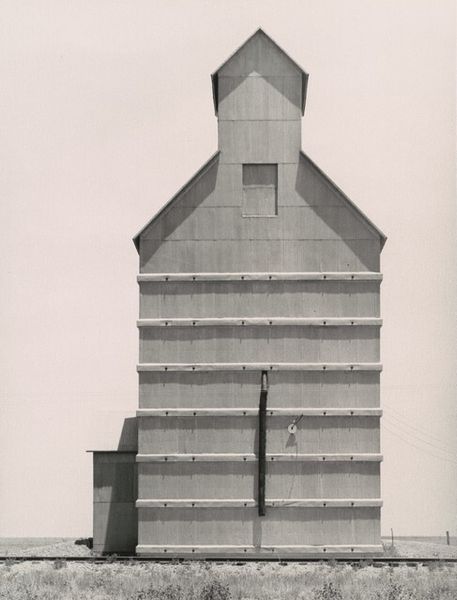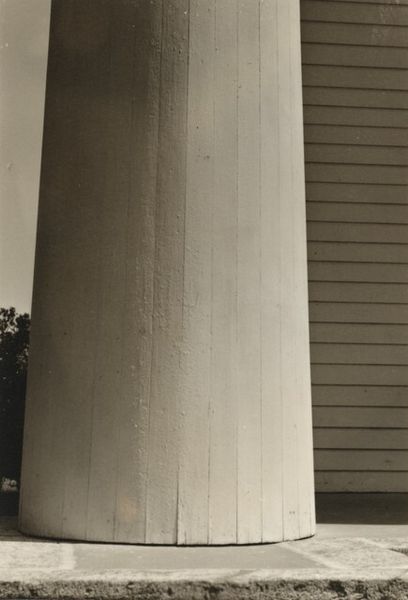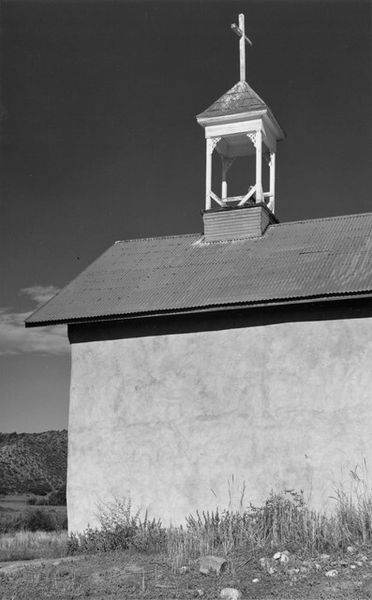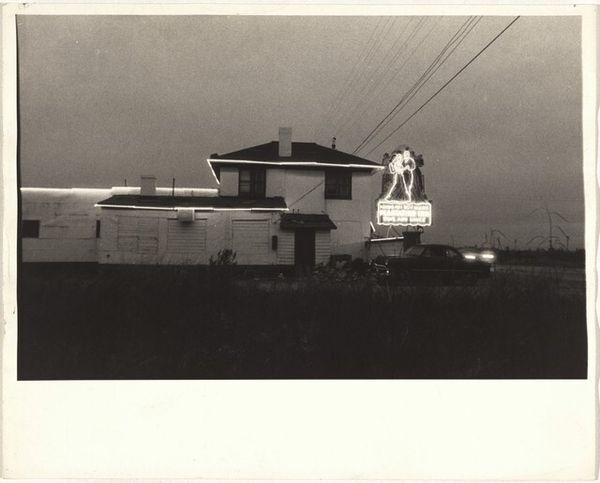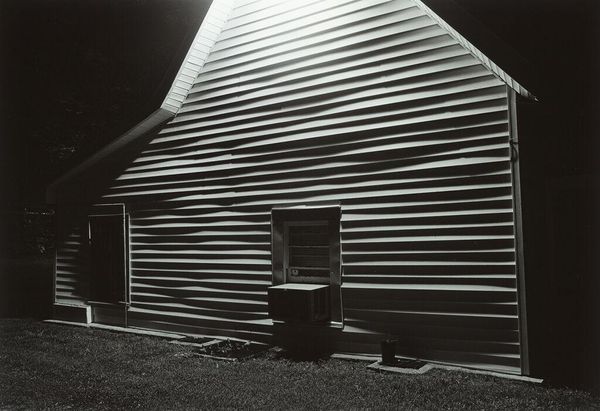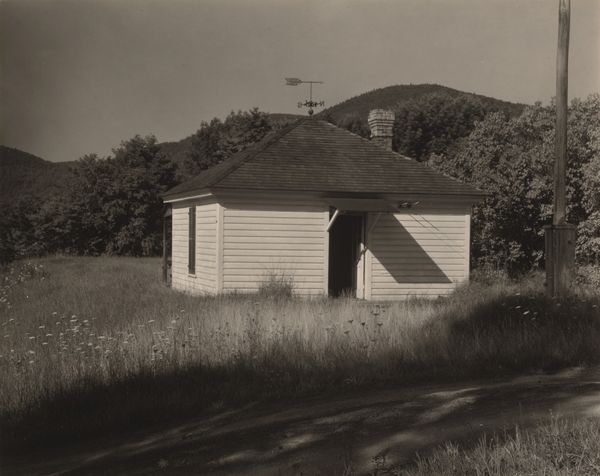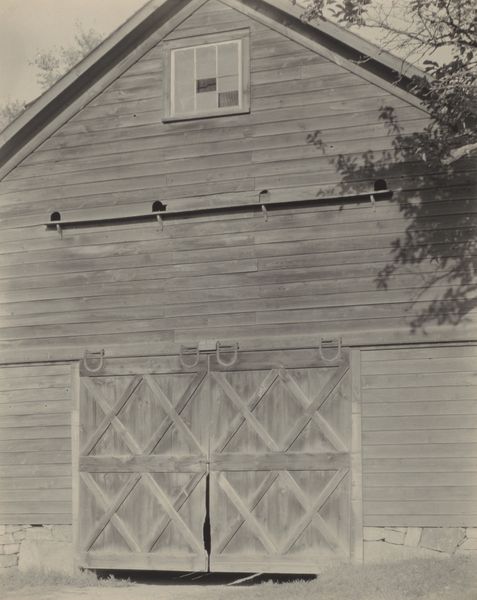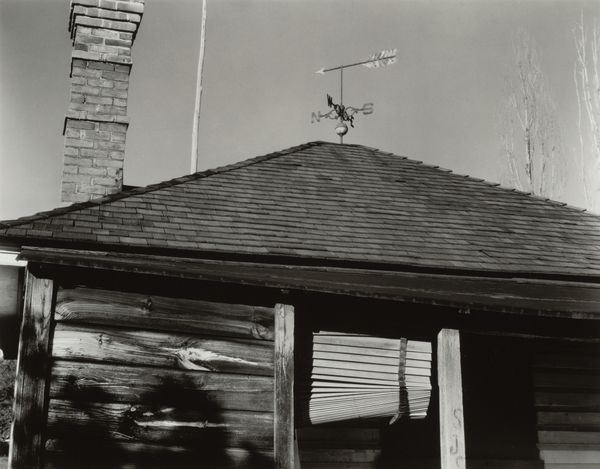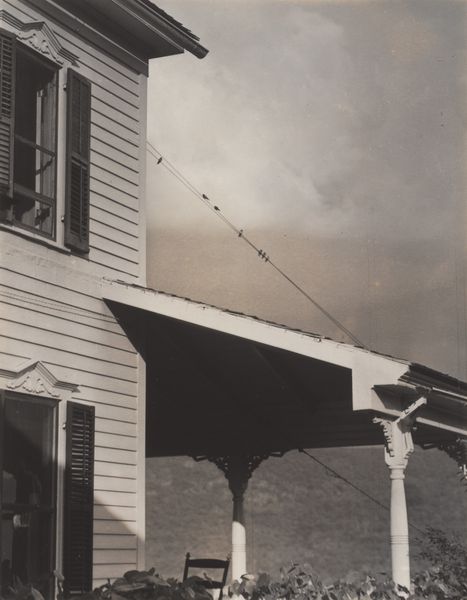
photography, gelatin-silver-print
#
black and white photography
#
landscape
#
photography
#
black and white
#
gelatin-silver-print
#
monochrome photography
#
cityscape
#
monochrome
#
modernism
#
realism
#
monochrome
Dimensions: image: 6.4 x 9.7 cm (2 1/2 x 3 13/16 in.) sheet: 25.1 x 20 cm (9 7/8 x 7 7/8 in.)
Copyright: National Gallery of Art: CC0 1.0
Curator: Dorothy Norman's 1935 photograph, "Church, Waquoit," is a gelatin-silver print that offers a striking study in form and texture. Editor: It’s instantly serene, almost meditative. The stark monochrome and geometric composition create a feeling of detached stillness. The composition, nearly all vertical lines, only hints at the horizontal world. Curator: Norman, associated with the Stieglitz circle, often explored themes of social commentary and the American landscape through a modernist lens. We can read "Church, Waquoit," not merely as a depiction of a church, but as a symbol of established institutions during the Depression era. Consider how that small outbuilding mirrors the architectural patterns of the large building but offers a radically different scale. Editor: True, yet consider the image's success through pure formalism. The interplay of light and shadow on the cylindrical form of the structure is remarkable, the almost brutal simplicity is so appealing. The dark windows are little punctuations on the wall, highlighting the play of positive and negative space. Curator: The wires cutting across the frame also invite interpretation. Are they symbols of communication, of connection or conversely, of barriers and divisions within the community it serves? The image reflects how systems, even those meant to offer spiritual guidance, can be perceived within social frameworks of inequality. The sharp focus, the starkness... this piece resonates differently today, amidst societal reflection on historical structures of power. Editor: Yes, context enriches. But look at the pure contrast – the flat facade of the outbuilding contrasting with the rotund body of the church itself. These juxtapositions form a dynamic dialogue within the still frame that resonates beyond historical or social readings. Curator: Ultimately, this photograph invites dialogue between these viewpoints. Its strength lies not just in its visual presentation, but its invitation for discourse about social power dynamics inherent to that setting. Editor: Absolutely. Whether approached through social analysis or through pure formalism, Norman's photograph prompts us to engage with space, structure and the very act of seeing.
Comments
No comments
Be the first to comment and join the conversation on the ultimate creative platform.
